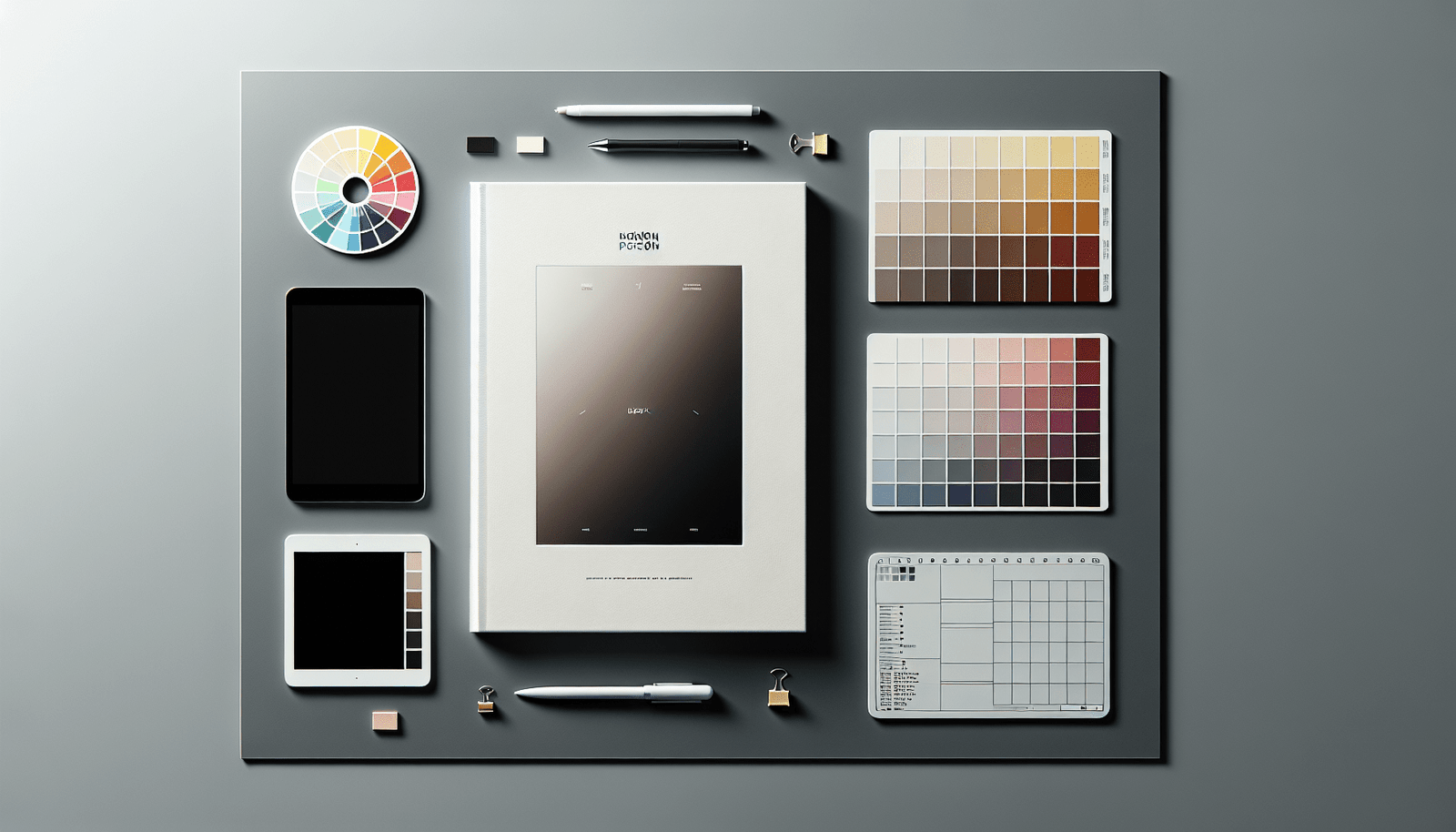Creating a compelling non-fiction book cover is an art that goes beyond mere aesthetics; it’s about connecting with your intended readers at first glance. By understanding key principles such as choosing impactful imagery, selecting the right typography, and crafting a compelling title, you can design a cover that not only stands out but also communicates the essence of your book effectively. Dive into the nuances of cover design, learn from industry experts, and discover how to make your book visually irresistible to your target audience.
Have you ever picked up a book solely because the cover grabbed your attention? You’re not alone! The cover is often your book’s first impression, and we all know how far a good first impression can go. So, how can you master non-fiction cover design to captivate your target audience? Let’s dive into the nitty-gritty and get you on the road to creating a captivating non-fiction book cover.

Understanding Your Target Audience
Knowing who you’re designing for is half the battle. Your target audience determines the style, tone, and visual elements of your cover.
Who Are They?
Identify demographics like age, gender, and interests. Are they teens fascinated by history, or professionals looking for self-help books? Creating a reader persona helps in tailoring the design elements to fit what your audience would find appealing.
What Are Their Preferences?
Look at popular non-fiction books within your niche. This gives you an idea of what works and what doesn’t. Are those books minimalist or filled with vibrant colors? Do they use illustrations or photography?
How to Gather This Information
Conduct surveys, focus groups, or even utilize social media polls. Ask them directly about their preferences. The more data you collect, the better you can design your cover to meet their expectations.
Essential Elements of a Non-Fiction Cover
What exactly makes a non-fiction cover stand out? Let’s break down the essential elements.
Title and Subtitle
Your title and subtitle are your main selling points. Make sure they are clear, readable, and intriguing.
- Font Style: Choose a font that reflects the book’s tone—serif for a classic feel, sans-serif for modern vibes.
- Font Size: Ensure the title is big enough to be easily readable even when viewed as a thumbnail.
- Subtitle Position: Usually, the subtitle goes beneath the title but can sometimes be integrated creatively.
Imagery and Graphics
Visuals can either make or break your cover. Use high-quality images that resonate with your book’s content.
- Photo or Illustration: Decide whether a photograph or an illustration suits your book better.
- Relevance: The image should be closely related to your topic or theme.
- Professionalism: Avoid stock images that look cheap or overly familiar.
Color Scheme
Colors evoke emotions, and different colors can attract different types of readers.
- Psychology of Colors: Use colors that match the mood of your book. Blues often signify trustworthiness, reds can evoke urgency, and greens are associated with nature or money.
- Contrast: Make sure the text color contrasts well with the background to ensure readability.
Layout and Composition
A well-organized layout ensures that your cover isn’t cluttered and confusing.
- Rule of Thirds: Imagine breaking the cover into three parts both horizontally and vertically. Place focal elements at intersections to naturally draw the eye.
- Balancing Elements: Ensure that text and images are well-balanced. Too much of one can make the cover look unprofessional.
Step-by-Step Cover Design Process
Creating a cover might seem daunting, but let’s walk through it step-by-step.
Step 1: Conceptualize
Begin by brainstorming ideas. Think about what message you want to communicate and how best to convey it visually.
Step 2: Sketch Ideas
Use a pencil and paper to sketch out your ideas. This preliminary step helps in organizing thoughts before diving into digital tools.
Step 3: Choose Your Tools
Select the tools you are comfortable with. Adobe Photoshop, Illustrator, or even Canva can be quite effective.
Step 4: Create a Draft
Use your sketches as a guide to create a digital draft. Experiment with different layouts, fonts, and color schemes.
Step 5: Get Feedback
Share your draft with others, especially those who resemble your target audience. Gather their feedback and make adjustments accordingly.
Step 6: Finalize
After revisions, finalize your cover. Ensure it looks good both as a full-size cover and as a thumbnail.
Common Mistakes to Avoid
Even seasoned designers make mistakes. Here are some common pitfalls and how you can avoid them.
Overcrowding the Cover
Less is more. A cluttered cover can confuse potential readers rather than attract them.
Poor Font Choices
Stay away from overly decorative fonts that are hard to read. Stick with professional and clean font styles.
Ignoring Thumbnail View
Most people will see your book cover first as a thumbnail online. Ensure it looks good at that size.
Generic Imagery
Using overused stock images can make your book look like hundreds of others. Aim for originality.
Neglecting the Spine and Back Cover
Don’t forget that your book has a spine and back cover. Ensure they align with the front and maintain consistency.
Learning from the Best: Case Studies
Analyzing successful non-fiction covers can provide invaluable insights.
Case Study 1: “Sapiens” by Yuval Noah Harari
- Title Placement: The title is bold and centered, making it easily readable.
- Imagery: Uses a single fingerprint image that is relevant and intriguing.
- Color Scheme: Utilizes a neutral color palette, evoking calm and thoughtfulness.
Case Study 2: “Educated” by Tara Westover
- Title Placement: Positioned clearly at the top with a unique font.
- Imagery: The pencil turning into a mountain is metaphorical and engaging.
- Color Scheme: Uses warm colors that elicit emotions tied to the story.
DIY vs. Professional Designers
Not everyone has the design skills required to create a stunning cover. Should you DIY or hire a professional?
DIY Approach
- Pros: Cost-effective and allows full control over the design process.
- Cons: Time-consuming and might lack a professional touch if you’re not skilled in design.
Hiring a Professional
- Pros: Ensures a high-quality, professionally designed cover.
- Cons: Can be expensive and might involve less personal control over the final design.
| Options | Pros | Cons |
|---|---|---|
| DIY | Cost-effective, Full control | Time-consuming, Might lack expertise |
| Professional | High-quality design, Professional touch | Expensive, Less personal control |
Advanced Design Tips
Ready for some tips that take your design from good to outstanding?
Incorporate Trends
Keep an eye on the latest design trends but don’t be a slave to them. Ensure your cover is timeless yet modern.
Use Grids
Grids help in aligning elements properly, ensuring your design looks organized and professional.
Typography Pairing
Using two complementary fonts can add a dynamic quality to your cover. Ensure they don’t clash and maintain readability.
Visual Hierarchy
Create a visual hierarchy to guide the reader’s eye to the most important elements first. Use size, color, and placement to establish this.
Testing Your Cover
How do you know your cover is effective? Let’s talk about ways to test its impact.
A/B Testing
Create multiple versions of your cover and test them with segments of your audience to see which one performs better.
Focus Groups
Gather a small group of target readers and get their feedback. Ask them about their first impressions and what message they get from the cover.
Online Surveys
Online surveys can reach a larger audience. Use platforms like SurveyMonkey to gather opinions and data.
Wrapping Up
Designing an engaging non-fiction book cover is both an art and a science. It requires understanding your audience, focusing on essential design elements, and avoiding common mistakes. Whether you choose to DIY or hire a professional, use this guide as your roadmap.
Remember, an eye-catching cover not only attracts readers but also conveys the quality and essence of your book. So take your time, experiment, gather feedback, and most importantly, have fun with the creative process. Happy designing!



